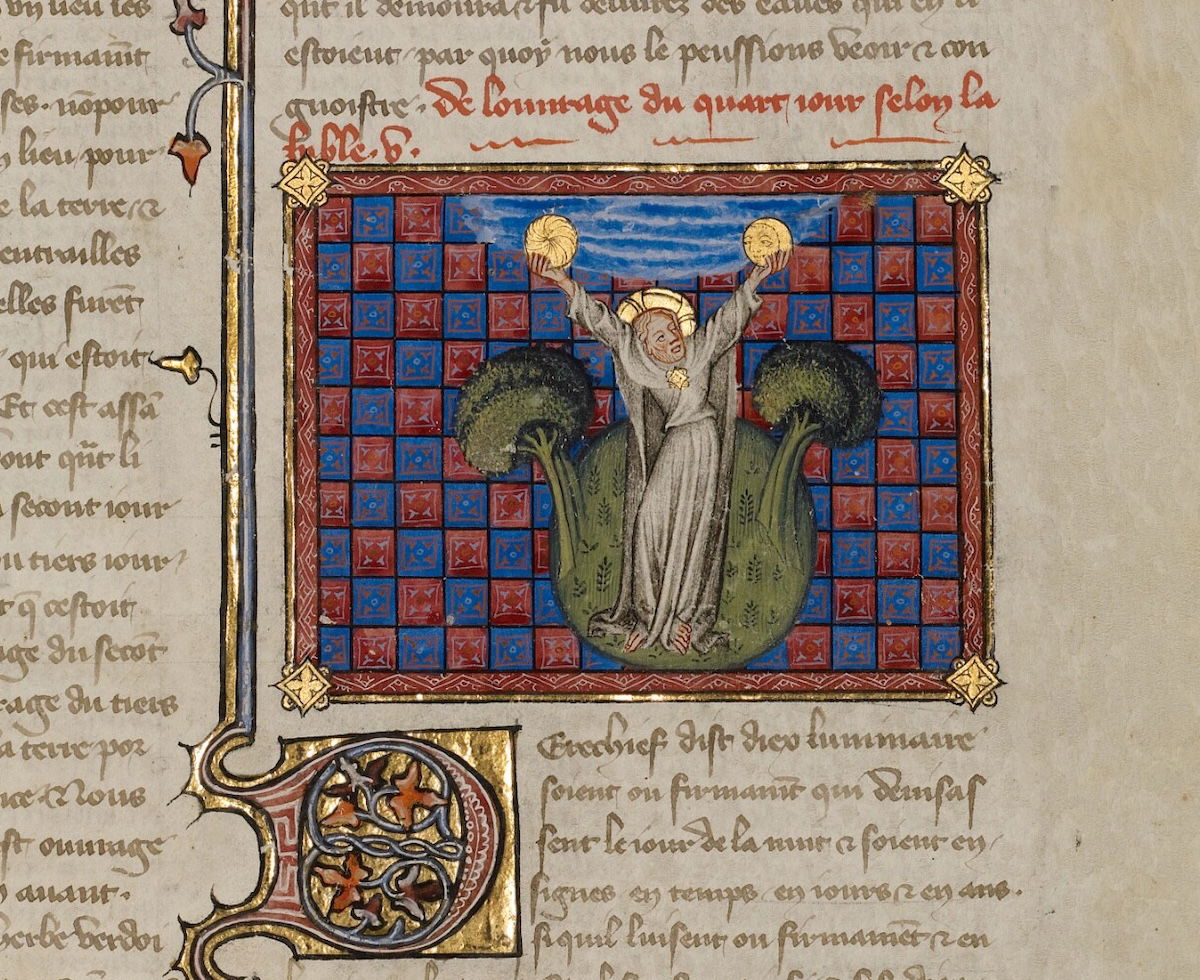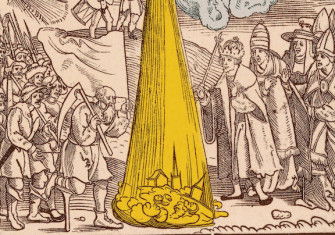‘The Medieval Moon’ by Ayoush Lazikani review
More than science waiting to be understood, The Medieval Moon: A History of Haunting and Blessing by Ayoush Lazikani illuminates the enchanted orb of poets.

Historical commentary on the moon’s place in human culture, especially from historians of science, is all too often dominated by the question of what people in the past knew about it. Did they understand that it was a sphere, that its light was received from the sun, that it is responsible for tides, and so on? The difficulty with this sort of approach is that it is narrowly focused on the past’s relationship to the present. It ignores almost entirely what the moon meant to people at the time. It is this question that Ayoush Lazikani – a literary scholar rather than a historian of science – sets out to address in The Medieval Moon. This is a rich and multifaceted cultural history across the period 700-1600 that considers the extent of medieval thought about the moon for its own sake.
Lazikani draws attention to the fact that medieval attitudes to the moon have hitherto been neglected, in comparison with ancient speculations and the discoveries of the Enlightenment era. Even where scholars have written about medieval approaches to the moon, it has seldom been considered as a subject in its own right, largely because historians of medicine, intellectual historians, and historians of science generally consider ‘their’ aspect of the moon within the silo of their own discipline – from the lunar calendar, to the moon’s role in astrology and alchemy, to the lunar magic found in the 11th-century Arabic compendium the Picatrix, to concepts of lunacy within medieval medicine. Lazikani unites these disparate perspectives in a coherent and beautifully written study.
Yet The Medieval Moon delivers far more than just a thematic overview of the moon that bridges disciplinary siloes. Lazikani refreshingly challenges the conventional periodisation of the Middle Ages by taking the story forward to 1600 (on the basis that astronomical perceptions of the moon did not change significantly until the 17th century) and, more importantly, offers a genuinely global vision of the period, taking in Japanese, Polynesian, and Mayan culture. While the depth to which these cultures can be examined is, inevitably, somewhat limited in a book of just over 200 pages, a genuine strength of Lazikani’s scholarship is her deep knowledge of the Islamic world and the Near East, and she authoritatively integrates Islamic learning into the history of knowledge in medieval Europe. The European occult tradition, for example, could not have existed without the lunar magic of the Islamic world mediated via Umayyad Spain. Whether or not we need to know about the Māori in a history of the medieval moon, and whether or not such cross-cultural comparisons add a great deal to the story, there can be no doubt as to the centrality of Islamic traditions to the development of medieval ideas about the moon.
Lazikani’s moon is a haunting, poetic presence rather than merely an object of scientific or philosophical enquiry; again and again, she draws us back to literature – from Chaucer to Persian love poetry – and to the experiential reality of living with the moon described in these sources. She begins by approaching the moon as a riddle; medieval people were the inheritors of religious and scientific traditions from the ancient world that interacted in complex ways with new monotheistic worldviews, and the moon – as a celestial body frequently conceptualised as a deity – was a focal point for many anxieties. In one sense, the moon was embedded in Christianity, Islam, and Judaism as religions that relied on the lunar calendar; but it was also true that it had once been an object of idolatry – which raised troubling questions about the extent to which its influence over the Earth ought to be accepted and studied. However, as Lazikani shows, the moon was also fertile ground for creative fantasy and imagination – Lucian of Samosata’s fantastical narrative of a journey to the moon became the basis for persistent speculations about whether it might be possible to reach it, such as Ludovico Ariosto’s Orlando Furioso, a 16th-century tale of a knight who journeys to the moon to recover his cousin’s wits.
The moon was both religious and magical, significant as a symbol of Islam and an omen of tragedy, as with the lunar eclipse of 1345, widely believed to have portended the Black Death. Lazikani explores the significance of the moon in medieval medicine, where a celestial body that waxes and wanes inspired theories about the relationship between the moon and illnesses that affected patients intermittently – most famously in the area of mental illness.
The moon provided an unwavering cycle for reality and time, but it was also a symbol of change and inconstancy. As the lowest of the planets in Ptolemaic cosmology, the moon was just above the Earth’s atmosphere and its sphere represented a liminal and sometimes morally ambivalent zone between the purity of the heavens and the grossness of Earth. An emblem of sorrow and illusion with its borrowed and ethereal light, the moon mirrors human imperfection and brokenness. Yet it was as often a symbol for love as it was an emblem of sorrow; the moon of medieval lovers lit their assignations but it could also become an emblem of both beauty and waning inconstancy, as it was for the Welsh poet Dafydd ap Gwilym: ‘The bright moon’s worse than the sun.’
Lazikani’s moon is ‘riddling, planetary, influential, powerful, adventurous, signifying, healing, loving’, and her ‘multi-glance’ approach to the subject allows her to take a bird’s eye view (as it were) of approaches to the moon across different cultures. Yet it is the universality of living with the moon that makes it an ideal subject for a planetary history of medieval humanity; indeed, it is part of what it means to be human to co-exist with this seductive celestial body. If its prosaic reality as a dead rock has killed some of its former magic, Ayoush Lazikani’s book powerfully reminds us that the moon was once, and can still be, the enchanted orb of poets.
-
The Medieval Moon: A History of Haunting and Blessing
Ayoush Lazikani
Yale University Press, 272pp, £20
Buy from bookshop.org (affiliate link)
Francis Young’s latest book is Silence of the Gods: The Untold History of Europe’s Last Pagan Peoples (Cambridge University Press, 2025).






